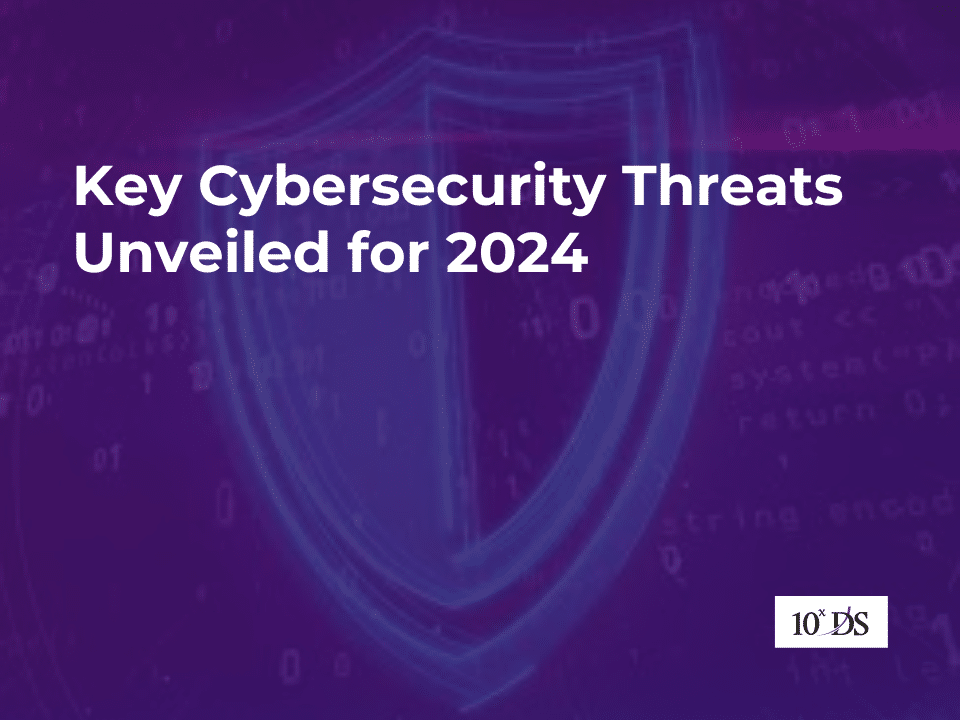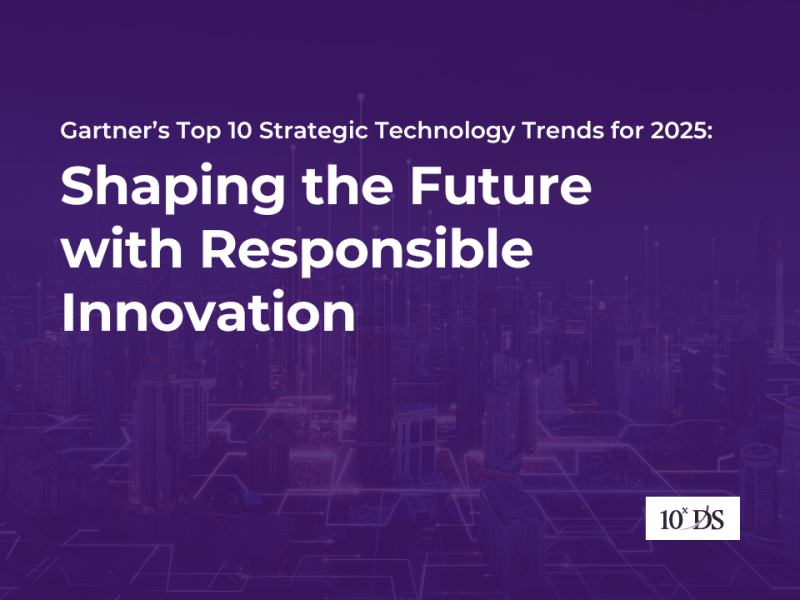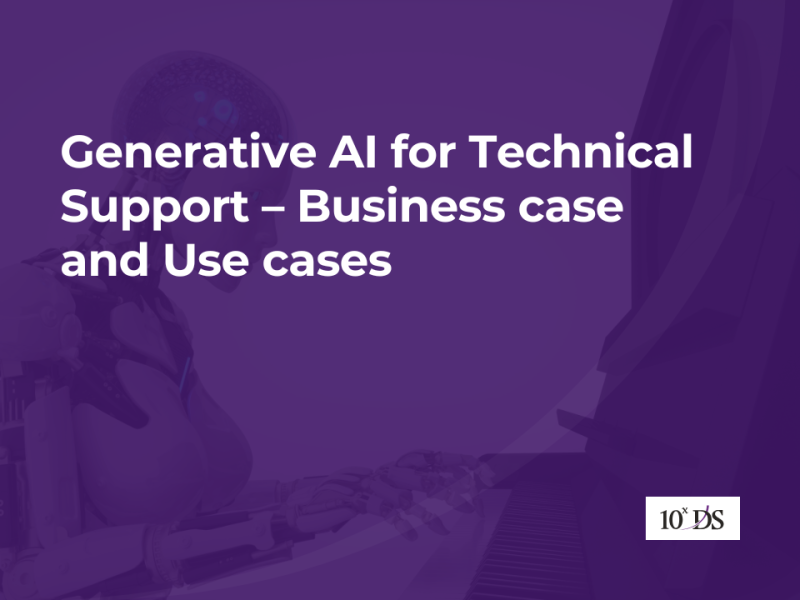
Key Cybersecurity Threats Unveiled for 2024
In the ever-evolving digital landscape, the quest for technological advancement is met with an equally dynamic array of cybersecurity threats. When we look back at 2023, we see many data breaches that affect many organizations and people. Mass hack of the file transfer tool MOVEit impacted more than 200 organizations and up to 17.5 million individuals, T-Mobile data breach affected about 40 million current and former customers, breach at Yum! Brands affected 1.5 million customers who used online ordering system; these were only a few of the breaches that were widely discussed. As we embark on a new year, the horizon of 2024 introduces a spectrum of challenges that demand our collective vigilance. This blog serves as a compass through the complex terrain of cybersecurity, shedding light on the pervasive threats that loom on the horizon. From sophisticated disinformation campaigns to the intricate web of supply chain compromises and the evolving risks tied to smart device data, our exploration encompasses the diverse facets of cyber threats that command attention in the coming year.
Supply chain compromise of software dependencies
As organizations increasingly rely on interconnected systems and third-party software components, the potential for exploitation within the supply chain grows exponentially. Malicious actors target vulnerabilities in these dependencies, compromising not only individual systems but entire networks. In supply chain attacks, hackers infiltrate the software development process and insert malicious code into software components that are widely used by other applications. This way, they can compromise multiple targets with a single attack. For instance, the recent SolarWinds hack was a supply chain compromise that affected thousands of organizations, including government agencies and Fortune 500 companies. Defending against this evolving threat requires a holistic approach, including rigorous vetting of software sources, continuous monitoring for anomalies, and the implementation of robust security protocols throughout the supply chain.
Advanced disinformation campaigns
Characterized by sophisticated tactics and techniques, these campaigns aim to manipulate information, deceive the public, and sow discord on an unprecedented scale. As technology advances, so do the capabilities of those orchestrating these campaigns, making it crucial for cybersecurity measures to adapt and innovate. Hackers use artificial intelligence and social media platforms to create and spread false or misleading information that can influence public opinion, undermine trust, or incite violence. For example, hackers can use generative AI tools to create realistic but fake images, videos, or audio clips that can manipulate people’s perceptions of reality. Defending against such threats requires a multifaceted approach, combining advanced detection mechanisms, strategic intelligence, and a vigilant, informed user base.
Rise of digital surveillance authoritarianism/loss of privacy
The rise of digital surveillance authoritarianism marks a critical juncture in the realm of cybersecurity, posing an imminent threat to individual privacy. As governments and entities leverage advanced technologies for surveillance, the potential for a pervasive loss of privacy grows exponentially. This is a type of threat where governments or other actors use digital technologies to monitor, control, or oppress their citizens or opponents. For example, some countries use facial recognition, biometric data, or internet censorship to track, identify, or silence dissidents. This evolving threat challenges the delicate balance between security and personal freedoms.
Human error and legacy systems
The vulnerabilities of human error and exploited legacy systems within cyber-physical ecosystems stand out as critical threats. As technological integration deepens, the intersection of human actions and outdated infrastructure creates potential entry points for malicious actors. The evolving threat landscape necessitates a comprehensive approach, addressing not only technological vulnerabilities but also emphasizing user education and system modernization. For example, hackers can cause physical damage or disruption by tampering with the power grid, water supply, or transportation systems. This type of threat exploits the vulnerabilities or mistakes of human operators or outdated systems that control critical infrastructure or industrial processes. Mitigating these risks requires a forward-looking cybersecurity strategy that empowers individuals with knowledge, updates aging systems to current standards, and embraces proactive measures to secure our increasingly interconnected cyber-physical world.
Targeted attacks enhanced by smart device data
As our homes and workplaces become more interconnected, the wealth of information generated by smart devices becomes a prime target for malicious actors. From personal habits to sensitive business operations, the data harvested from these devices provides a comprehensive view, amplifying the impact of targeted attacks. In this type of attack, hackers use the data collected by smart devices such as wearables, smart home appliances, or IoT sensors to launch more personalized and effective attacks. For example, hackers can use the data to infer the habits, preferences, or location of their victims and then send them tailored phishing emails, ransomware demands, or blackmail messages. As we navigate this era, fortifying our defenses against targeted attacks fueled by smart device data is imperative for maintaining digital security and privacy.
To prepare for the challenges and opportunities of 2024, here are some best practices to follow for cybersecurity:
Enhance software security
Software security best practices include applying secure coding standards, conducting regular vulnerability assessments and code reviews, implementing security patches and updates, and using encryption and authentication mechanisms. Software security also involves ensuring that the software supply chain is trustworthy and transparent and that third-party software components are verified and compliant with security requirements.
Improve cybersecurity risk management
It is imperative to establish a clear governance structure and accountability for cybersecurity, developing a comprehensive cybersecurity strategy and policy framework, conducting regular risk assessments and audits, implementing effective controls and measures to prevent, detect, and respond to cyber incidents, and ensuring business continuity and disaster recovery plans are in place.
Invest in modern information technology
The best practices include adopting a cloud-first approach, leveraging AI for cybersecurity automation and intelligence, securing IoT devices and networks, preparing for quantum threats, and staying abreast of the latest technology trends and innovations.
Harmonize cybersecurity laws and policies
Organizations need to promote international cooperation and coordination on cybersecurity issues, aligning cybersecurity standards and frameworks across jurisdictions, ensuring compliance with data protection and privacy laws, fostering a culture of cybersecurity awareness and education, and supporting innovation and competitiveness in the digital economy.
Build the best workforce
Attracting and retaining talent with diverse backgrounds and expertise in cybersecurity, providing continuous training and development opportunities for employees to upgrade their skills and knowledge is key. Organizations also need to create a collaborative and inclusive work environment that fosters innovation and creativity, empowering employees to take ownership and responsibility for cybersecurity, and rewarding employees for their performance and contributions.
Vigilance and adaptation are our greatest allies in the ever-shifting digital realm. The interconnected nature of our technological ecosystem underscores the need for a proactive stance against evolving threats. The road ahead demands a collective commitment to fortifying our defenses, knowledge and preparedness stand as our strongest safeguards. Embracing the challenges of 2024 requires a united front, where the lessons learned from the past propel us into a future where cybersecurity resilience is not just a goal but a shared responsibility.


